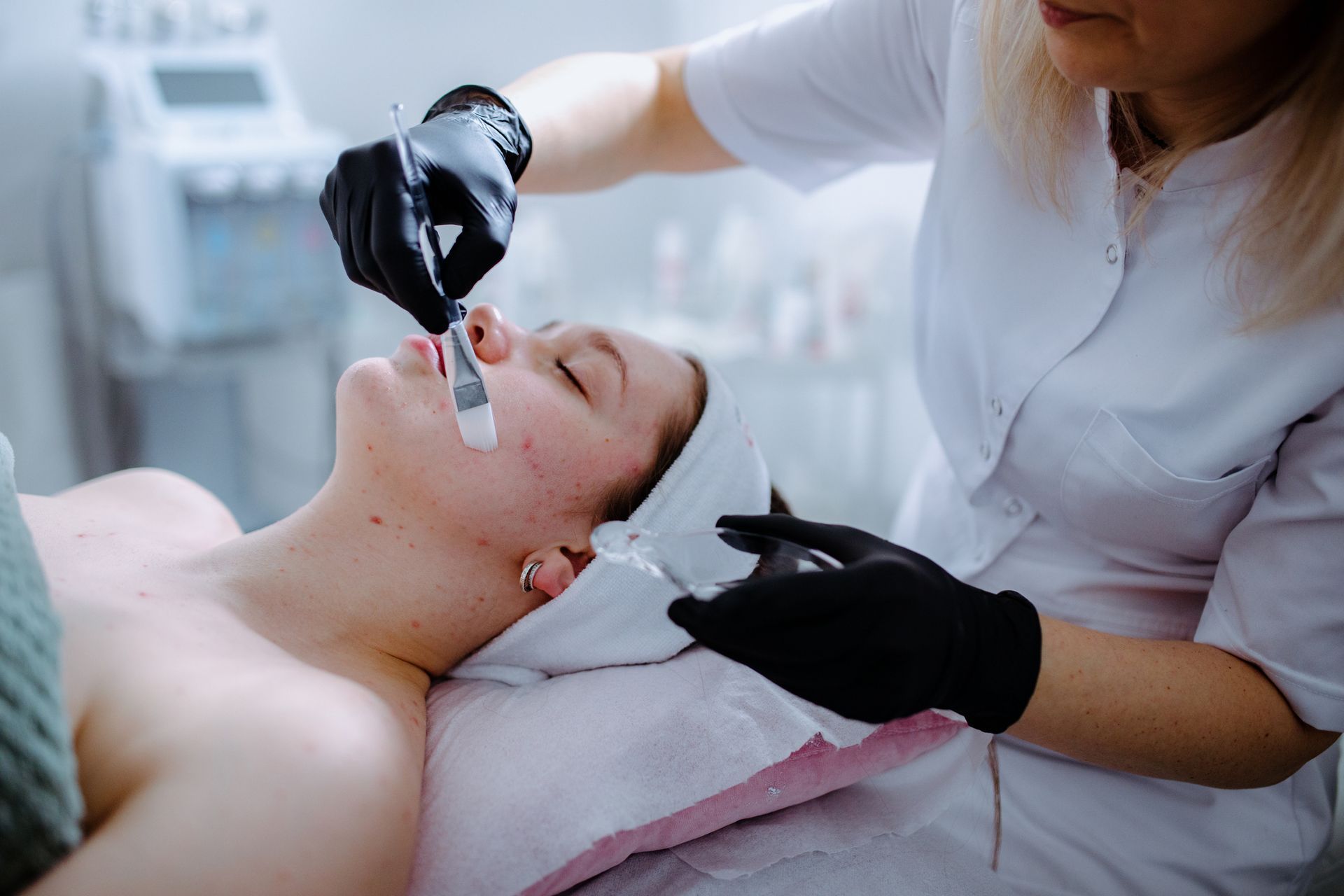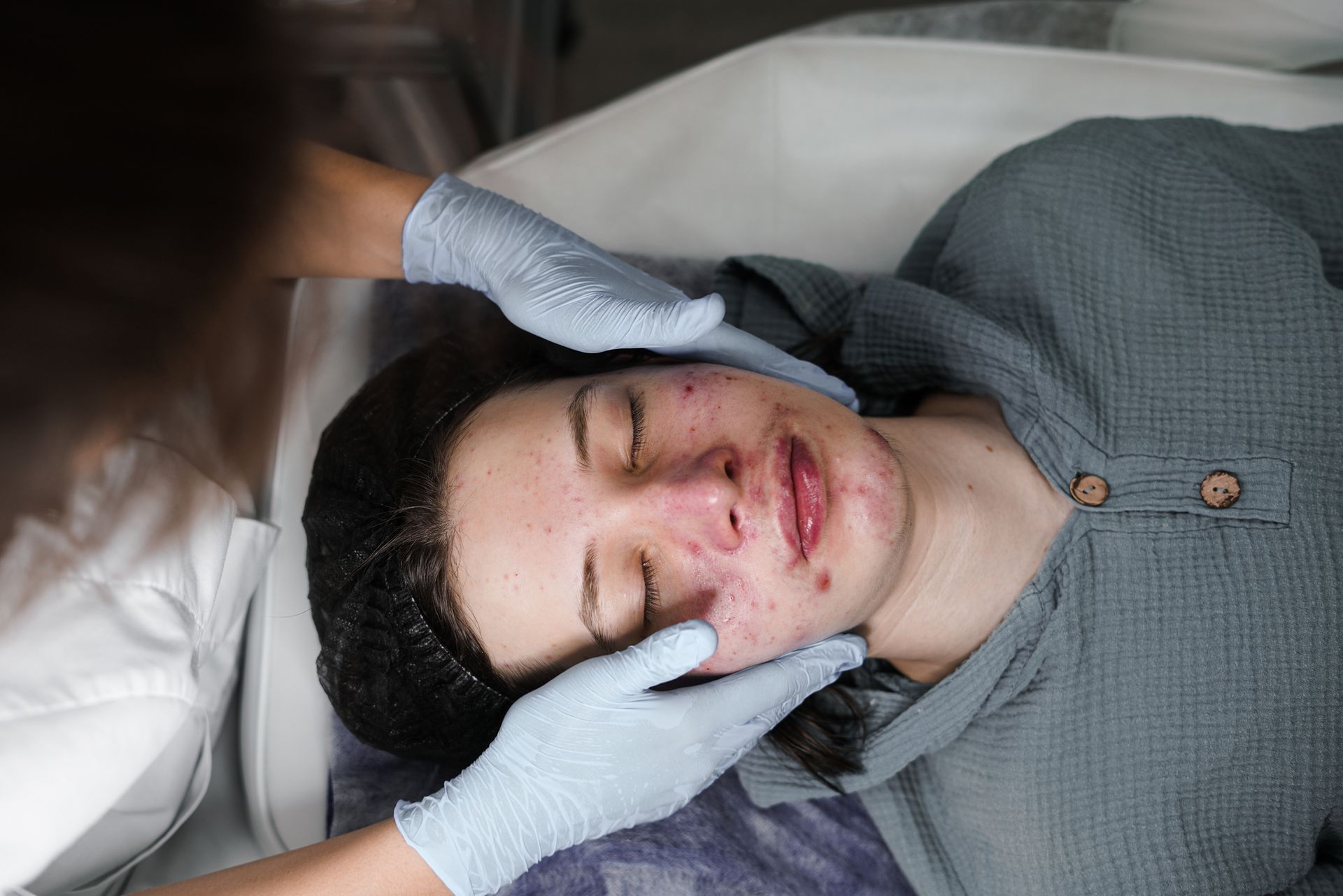Dermatology Emergencies
Dermatology: Urgent Conditions – How to stay out of the ER and Urgent Care during this time
Dr. Caitlin Porubsky, DO , FAAD
Dr. Francisca Kartono, DO , FAOCD, FAAD
Dear friends and amazing patients,
With shelter-in-place orders from top health officials until end of April, it is very important that we stay at home as much as possible to curb the spread of COVID-19.
We would like to remind you that certain skin conditions can be rescued by prescription medications and diagnosed from the comfort of your own home. More importantly, there are skin conditions that do not seem urgent at the beginning, but can develop into an emergency situation rather quickly if left untreated.
Here are the TOP 5 rashes that you should not ignore and call your dermatologist ASAP :
Shingles
- Also known as Herpes Zoster, it is the reactivation of the Chickenpox virus.
- Starts with 1-3 days of burning, tingling pain before the rash starts.
- The rash starts with red bumps and small fluid-filled blisters that are clustered together on one side of the body.
- When the rash occurs on certain areas of the face, this can be an emergency for visual disturbance and hearing loss.
- Shingles is contagious, especially to the elderly, immunocompromised, and pregnant women. A person remains able to transmit the virus until the rash has crusted and scabbed over.
- See or call your dermatologist EARLY. Early oral medications can help with stopping symptoms and results in a short recovery time.
Abscess
- This is a painful, red nodule in the skin that evolves over a few days, until it eventually opens up and drains pus.
- Staphylococcus bacteria can overgrow in that area.
- Home treatment involves warm compresses to get more drainage and relieve the pressure.
- See or call your dermatologist EARLY. A large abscess requires oral antibiotics and a procedure in office to help open the nodule and drain it. Here is where your dermatologist can help you out!
Drug rash
- This rash typically consists of red spots and bumps that start on the trunk before spreading to the extremities. It may also be very itchy.
- The rash occurs 7-10 days after starting a medication. The medication in question may also be one you have already stopped, or only took that one day.
- Starting antihistamines at home can help with the itch. Stopping the problematic medication is the solution but this should be discussed with your physician.
- See or call your dermatologist EARLY. Oral and topical corticosteroids may need to be prescribed for the rash.
Poison ivy
- With more time to enjoy the outdoors and spring weather causing plants to bloom, one has to be careful of the evil three-leaved plant.
- Make sure to rinse off with soap and water after within an hour of being outside in areas known to have poison ivy growing.
- Once you have noticed an area with red bumps and small blisters, often in a linear streak from leaves brushing against you, take oral antihistamines (such as Benadryl, Zyrtec, Allegra). You can also do Domeboro soaks and apply over the counter Cortisone cream.
- Some people get more severe of a reaction than others to the plant. This is when a telemedicine visit with your dermatologist is handy! We can prescribe stronger topical corticosteroids to alleviate the inflammation and itch, while sometimes oral steroids are needed.
Hives
- There are many reasons for hives: red, raised bumps or “welts,” that are itchy.
- An individual hive usually lasts less than 24 hours but overall, an episode of hives can last days to weeks, depending on the cause.
- Oral antihistamines are the mainstay for treatment.
- We can help determine the cause and prescribe other treatments to help with the symptoms.
- However, if you start develop swelling of the face, lips, tongue, trouble swallowing, difficulty breathing – this is life threatening and needs immediate attention!
Let us know if we can help, and email us any future topics you’d like to hear more about !
Virtual visits are available by emailing dsb.hamzavi@gmail.com , or contact us at (810) 355 4300
Please stay home, stay healthy, and be safe!
The post Dermatology Emergencies appeared first on Dermatology Specialists of Brighton.









